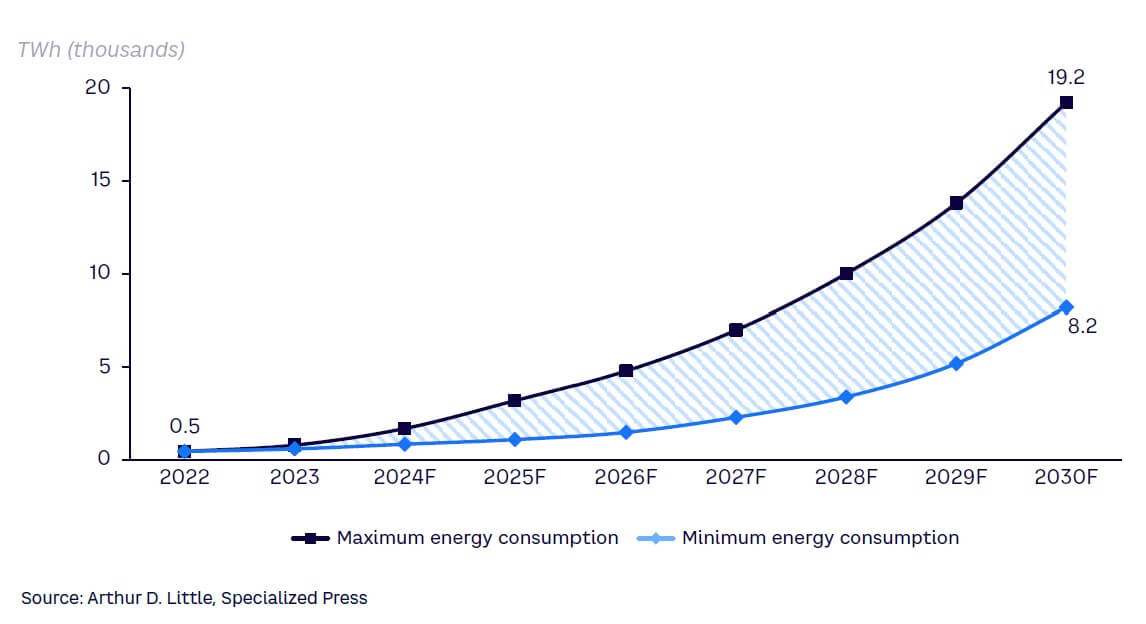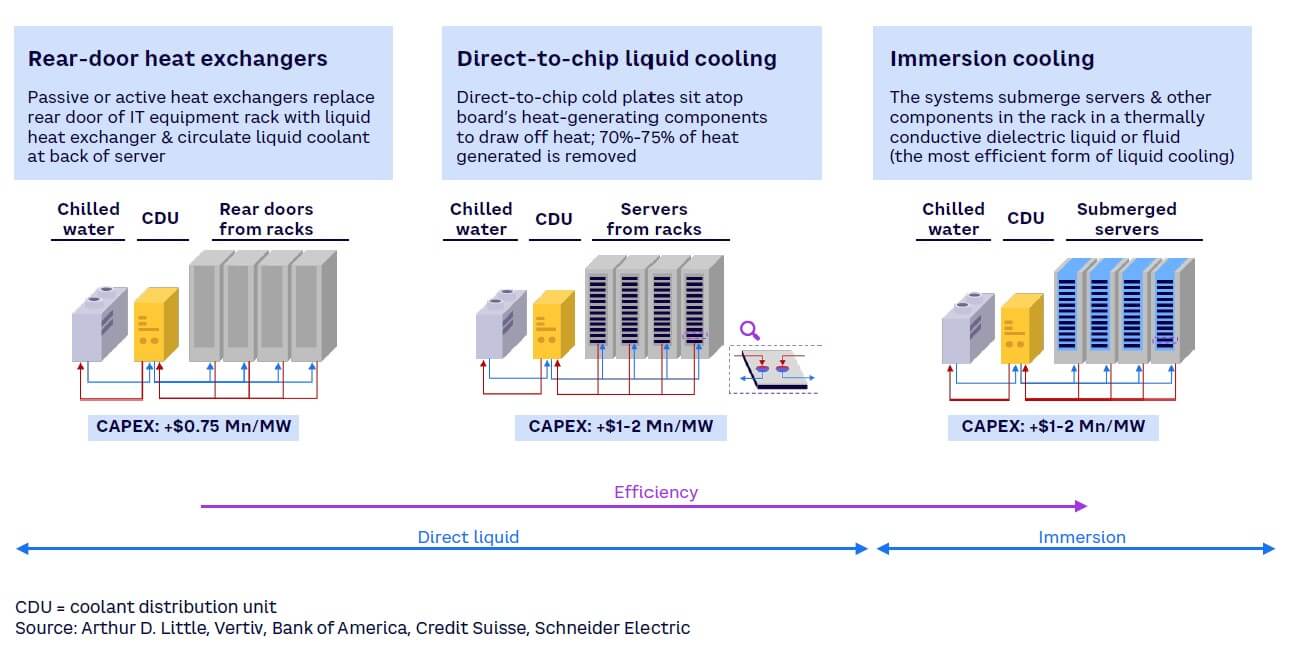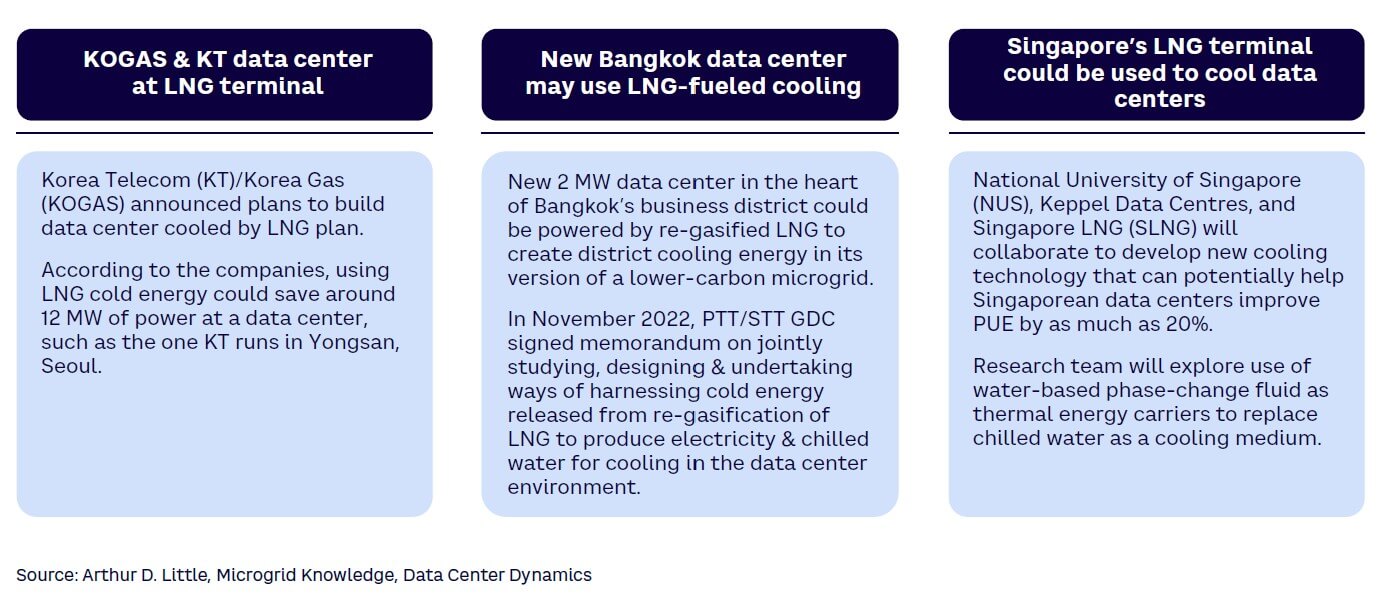
DOWNLOAD
DATE
Contact
AI has revolutionized industries worldwide, driving unprecedented growth in data center infrastructure. As organizations increasingly leverage AI to enhance decision-making, automate processes, and drive innovation, the demand for high-performance computing resources has surged, leading to significant challenges in managing power consumption and cooling needs within data centers. In this Viewpoint, we discuss how liquified natural gas (LNG) presents a sustainable option for optimizing consumption, maximizing data center value, and reducing cooling efforts.
DATA CENTER POWER NEEDS RISING
Powering AI
Data centers have become critical to modern business operations, providing computational power and storage capacity to support a wide range of applications and services. However, the growing demand for high-performance computing resources has led to significant challenges in managing power consumption and cooling needs within data centers. Cooling systems are essential components of data center infrastructure, responsible for maintaining optimal operating temperatures and ensuring the reliability of IT equipment. Data centers have used traditional methods, such as air-based cooling systems, as the primary approach to dissipating heat generated by servers, storage arrays, and networking devices. However, as data center densities increase and AI workloads drive higher computational demands, the energy consumption of cooling systems has become a notable contributor to overall data center power usage.
The integration of AI technologies into various business processes has substantially increased both computational requirements and storage demands on data center infrastructure. AI workloads, characterized by complex algorithms, deep learning models, and real-time data processing, require new hardware configurations and scalable resources to deliver optimal performance. The escalating power needs driven by AI applications have profound implications for data center operators, necessitating investments in innovative cooling technologies to mitigate the environmental impact of increased energy consumption. Upgraded infrastructure with the capacity to process an increasing energy consumption density per square meter is also important.
As such, the adoption of AI in data center infrastructure has contributed to a rise in energy needs. AI applications require substantial computational power, which in turn demands more energy. Training a single AI model can consume as much energy as a car over its entire lifetime. Moreover, AI-driven data centers often require specialized hardware, such as graphics processing units (GPUs) and tensor processing units, which are more energy-intensive than traditional central processing units.
Data center power forecast
Energy consumption by data centers is forecasted to rise exponentially, reaching approximately 19,222 terawatt-hours (TWh) by 2030 (see Figure 1).

According to the International Energy Agency (IEA), data center electricity usage is set to double by 2026, due to the rise of power-intensive workloads, including AI and cryptocurrency mining. The annual electricity report from IEA reported that data centers consumed 460 TWh in 2022; in a worst-case scenario, that figure could rise to more than 1,000 TWh by 2026. (The 460 TWh consumed by data centers in 2022 represented about 2% of all global electricity usage and about 1% of energy-related greenhouse gas emissions.) Computing power and cooling are the two most energy-intensive processes within data centers, and the rapid growth of AI-related services means providers have been investing in power-hungry GPUs.
The rate at which electricity usage will escalate depends on AI and other computing-intensive trends, the data centers’ pace of deployment, and the range of efficiency improvements. To mitigate this escalation, operators are experimenting with innovative cooling methods and heat-reuse technologies, with providers launching high-density, water-cooled racks for power-intensive AI workloads. Experts agree that the expansion of renewable energy production in the data center industry will accelerate, as current global renewable capacity is on course to increase by two-and-a-half times by 2030.
STRATEGIC RELEVANCE OF ENERGY SOURCING & POWER USE
Optimized operations are not enough
The role of AI in energy use is also considerable. While AI workloads have generated increases in data center power needs, AI technologies can play a critical role in improving energy use and lowering operational costs. AI algorithms can analyze data center operations in real time, identifying areas of inefficiency and recommending optimizations to reduce energy needs. For example, AI can optimize cooling systems by adjusting temperature settings based on real-time data, which decreases consumption while maintaining optimal operating temperatures. Additionally, AI can predict equipment failures and recommend maintenance schedules to minimize downtime and improve operational performance.
The use of edge computing has also gained traction in the data center industry as a means of achieving higher network efficiencies through reduced latency and improved performance. By processing data closer to the source, edge computing can reduce the amount of data transmitted to centralized data centers and over long distances, easing network congestion and improving response times. As a result, edge computing optimizes energy use while improving performance and reliability.
These actions, while helpful in making data center operations more efficient, still miss the focal point of the issue, which is power sourcing and consumption itself. Hence, additional measures, such as the use of renewable energy sources or the reduction of cooling needs, can drive down power consumption and are key to containing the exponential growth of data center power requirements.
Green data centers & renewable energy
The use of renewable energy has become a relevant trend in the data center industry. As described in the Arthur D. Little (ADL) Viewpoint “Green Data Centers: Opportunities for Decarbonization,” renewable energy sources like solar, wind, and hydroelectric power have gained traction in the data center industry as a means of lowering costs, decreasing carbon emissions, and promoting sustainability. Since data centers require a significant amount of energy to power their operations, the adoption of renewable energy sources can help reduce their reliance on fossil fuels and lower their carbon footprint.
Several data center operators have invested in renewable energy, with some companies aiming to power their entire operations with renewable energy sources:
-
Google has committed to sourcing 100% of its energy needs from renewable sources.
-
Microsoft has pledged to become carbon-negative by 2030.
-
Infosys and Shell have partnered to build new green data centers.
-
Amazon Web Services (AWS) currently meets 85% of its energy requirements from renewable energy across its facilities on average; it seeks to meet 100% of its needs from renewable energy.
The adoption of renewable energy sources by data centers supports environmental sustainability and enhances operational resilience and cost-effectiveness.
Data center cooling mechanisms
Cooling methods have also been evolving as a strategic approach for managing AC power expenditure. A range of innovative technologies has emerged to optimize thermal management and reduce energy consumption in data centers. Liquid cooling technologies, including rear-door heat exchangers, direct-to-chip liquid cooling, and immersion cooling, have gained traction in the industry for their ability to efficiently dissipate heat in high-density computing environments (see Figure 2). These solutions offer enhanced thermal performance, optimized energy use, and scalability to meet the cooling requirements of AI workloads and high-performance computing applications. By adopting advanced cooling technologies, data center operators can align themselves with sustainability goals and industry best practices to achieve higher cooling capacities and lower energy costs and lessen their environmental impact.

LNG cooling: A new alternative
The use of LNG technologies in data center cooling processes presents a promising opportunity to reduce operational costs and promote environmental sustainability (see Figure 3). Adopting LNG technologies in data center cooling systems can create significant synergies for the industry. By utilizing LNG’s cryogenic cold energy, data centers can reduce their reliance on traditional cooling systems powered by electricity, resulting in substantial energy savings and operational efficiencies.

The cost-effectiveness of LNG as a cooling source can help data centers lower their operational expenses while contributing to environmental sustainability goals. Furthermore, LNG technologies offer a renewable alternative to conventional cooling methods, aligning with the industry’s increasing focus on transitioning to greener, more environmentally friendly practices.
Locating data centers close to LNG plants can facilitate data center cooling by redirecting residual cold to the servers. This approach can help cut down energy consumption and costs while promoting better environmental practices (see Figure 4). Introducing LNG technologies in data center cooling systems represents a significant step toward cooling optimization, cost savings, and environmental sustainability in the data center industry.

Several industry initiatives and projects demonstrate the practical application of LNG technologies in data center cooling processes and showcase the potential benefits of leveraging LNG for sustainable cooling solutions (see Figure 5). Collaborations between energy providers, data center operators, and technology partners have led to innovative approaches to utilizing LNG cold energy to cool data centers.

Projects in Asia and Europe have explored the integration of LNG technologies in data center cooling systems, demonstrating the feasibility and advantages of leveraging LNG for energy-efficient cooling solutions. These initiatives highlight the transformative impact of LNG on data center operations, offering a sustainable and cost-effective approach to addressing the industry’s energy challenges and promoting environmental stewardship.
Conclusion
STRATEGIC CONVERGENCE IS KEY TO UNLOCKING VALUE
The convergence of AI technologies, escalating power needs, and the imperative for energy-efficient cooling solutions has reshaped the landscape of data center operations, underscoring the importance of sustainability, innovation, and responsible resource management. As data centers evolve to meet the demands of AI workloads and high-performance computing applications, the integration of advanced cooling technologies such as liquid cooling and LNG solutions offers a pathway to optimize energy use, reduce operational costs, and promote environmental sustainability. By embracing alternative cooling practices, data center operators can optimize their operations and maximize value while paring down their environmental impact and contributing to a greener and more sustainable future for the industry.




